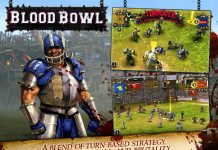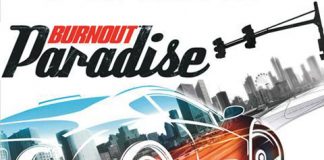Post Date: 17:28 18-07-2005
Rating: 9
Author: keybounce
Comment: Yohoho Puzzle Pirates: A Review
By Michael Gersten
(and two keyboard loving kittens)
Yohoho Puzzle Pirates, or YPP, is an MMOG where you play a pirate. Or a trader, sailing goods from place to place. Or, perhaps a master swordsman who wins money from tournaments. Etc.
YPP is a game where ships run around, sometimes attacking other ships to steal money and goods, sometimes avoiding other ships to deliver goods.
Unlike some other games (such as World of Pirates, or Pirates), you do not play a group of pirates. You do not play a crew. You do not play a ship. You play one single person. To sail a large ship, you need to work with other players. This is a very social game.
As a social game, the basic social structure is the crew. A crew is a group of people that enjoy sailing with each other, typically for the conversations, or for the fun of it; in at least one case, a crew may be a group of some of the best swordsmen in the game who are looking for the hardest challenges. Members of a crew will, in general, share access to the crew s ships. Ships can be marked as private. Depending on the rank a pirate has, they may have no permission to sail ships, or limited permission on ships that they do not own, or full permission on all crew ships.
The basic operation for a crew is the pillage. A pillage has a ship sailing around, looking for ships — either NPC brigands (primary source of “Pieces of Eight”, or “poe” — game money), NPC merchants (supplemental source of raw commodities), or player ships (primary source of a difficult encounters; occasionally, a player merchant with lots of goodies to, err, “assist” in getting to the nearest port :-).
A ship in combat requires three basic tasks to be performed. First, these are leaky wooden ships, that need constant attention. Someone has to perform carpentry work to keep them in shape, to plug the leaks. Second, these leaky boats need the bilge water bailed out, to keep them easy to sail. Third, they need someone to operate their sails, so they can maneuver and avoid taking damage from enemy cannonballs. Fourth, the cannons need to be loaded. Finally, one person has to drive the ship, directing the output of the sailors, and firing the loaded cannons. This first part of combat ends when one ship grapples the other, leading to a boarding and swordfight. The cannonfire during the sea battle determines how much of an advantage one side has over the other.
Now, all those things — the ships being sailed, the cannonballs being shot, the rum used to fuel the ships, even the clothing and swords the pirates use — all are made by players. The only thing supplied by NPC s are raw commodities from either merchant ships or harvested at colonized islands. The entire basic economy is both player driven and non-inflationary.
YPP is “Puzzle Pirates”. All ship operations are done by playing puzzle games. Bilge, for example, is similar to Bejeweled; carpentry is pentaminoes. SF is similar to super puzzle fighter. Etc. To give a complete review of the game, each of these puzzle subgames must also be reviewed.
Carpentry is played by placing pentamino pieces into “holes”. The game board contains 4 holes, of different sizes and shapes, always a multiple of 5 spaces in size. There are always three pieces available for you use to use. The pieces have a “Grain”, or alignment, to them; placing all the pieces so that the grains line up horizontally gives a bonus, as does only using a single type of pentamino piece. The less the pieces overlap; the fewer pieces you need to place to fill a hole, the better. A perfect, or “Masterpiece” scores the best. Advanced players control which of the 4 holes they fill; filling two adjacent holes will result in two fresh holes showing up on the game board (making it easier to continue), while two non-adjacent (diagonal) holes will not (making it more difficult to continue a perfect streak). The better your play, the faster you repair damage. Note that all ships that are sailing take damage from time on the water. The scoring emphasis is on steady, consistent play; one person has compared this to a zen-like meditation. A special piece, the “putty bucket”, will fill any space of up to 5 pieces, and acts as a wildcard.
Bilging is played on a 6 by 13 board, with between 5 and 7 different types of objects on the screen. By swapping adjacent pairs of objects, you try to line up three in a row of the same type. Clearing a line results in an empty space, which is filled in by moving the objects up and out of the water, and bringing fresh objects on the bottom. A combo — making more than one line with a single swap — scores more points, as does a longer line. Equally, a chain — when one line is cleared, another three in a row is formed as the empty space is collapsed — also scores bonus points. A good bilger will concentrate on spending two or three moves to clear two lines, or 4 or 5 moves to clear three lines. Additional special pieces — a crab that is only cleared by bringing it above the water line, a puffer fish that destroys all adjacent pieces, and a jellyfish that destroys all the objects of a given type — complete the puzzle. The better you score, the faster you empty the bilgewater out of the hold. If the ship is badly damaged, you might not be able to keep the water out. The higher levels have more objects, and score more points for combos. Chains score less than direct swaps — the emphasis is on clearing large groups (2 or 3 lines) in as few swaps as possible.
Sailing is also on a 6 by 13 board, with only three pieces, representing wind, sails, and water. This time, the board starts empty, or mostly empty, of pieces, but with “target platforms”. These targets have 4 or 6 spots, each labeled for one of the 3 types of pieces. A clear is either a completed target, or a four in a row. Although it is possible to get multiple lines simultaneously, scoring is based on clearing chains, as well as bonuses for targets; the best sailors can clear all the platforms with a single chain using approximately 8 to 13 total clears. The initial stationary pieces are obstacles; using them in a four in a row counts for more points than the pieces you drop. Pieces drop from the top as pairs; you can see the next piece to come, as well as the current piece. Because the pieces are linked, and stay linked, placing the pieces where you want them takes skill. Once all the targets are cleared, you get a fresh board, but no additional bonus.
None of these puzzles is twitch based. As long as you make a move (place a piece, or swap pieces) at least once every ten seconds, you have no penalty for time; going 10 seconds without making a move counts as making a move that scores zero points. All of these puzzles are ultimately scored on “average efficiency” — how well you have scored overall, as an average of your last several moves. The score is also based on a server specific percentile lookup. The testing ocean, for example, is generally only played by the best players, so it is very, very hard to score well on that ocean; at the other end, the Viridian ocean can be played for free (see below), so a large number of people often give it a try, lowering the difficulty for skilled players.
Gunning has a square board, about 13 by 13, to represent the deck of the ship, with 4 guns (which you want to load), and a bunch of obstacles. Around this board, a bunch of objects will wander. These objects will make a turn when they hit an obstacle or wall; turning right if possible, left if not, or a u-turn if both are blocked. You can place directional arrows to steer the pieces where you want them to go.
A gun starts off as empty; you load it by placing three objects into the gun, in order: first the powder, then the wad, then the cannonball. Once all the objects are in place, in order, it is loaded, and can be fired by the navigator in battle. If fired, it will become dirty. A dirty cannon, or a cannon that was misloaded by a piece out of order, must be washed out with a water bucket (the 4th type of object), and then reloaded.
Unlike the other puzzles, gunning is very much a reaction speed and twitch puzzle. The better you do, the faster the pieces move. This both lets you load faster (as the piece you want will come by quicker), and also makes the timing and reflexes needed much tighter. You are scored based on the speed at which you can get a fully loaded cannon ready for firing. If the speed of the pieces is too fast for you, you can “toss them overboard”, to slow down the pieces. Controlling the speed — making sure that you keep them fast enough that you can load quickly, but not so fast that you cannot keep up with them — is critical.
Putting it all together: Hitting the enemy ship
The “Put it all together” puzzle is the battle navigation. Here, you are navigating your ship on a board that represents the battle field. There are winds that will blow your ship, whirlpools that will rotate it, rocks that will block you and inflict damage, and of course, your enemy that you are fighting. Smaller ships can move 4 spaces per turn, and fire one shot in each direction (left or right) on each of the 4 impulses. Larger ships are slowed, and can only move on 3 of the 4 impulses. They can choose which one to stand still on. Additionally, they have larger cannons. The larger war ships (as opposed to merchant ships), with their larger supply of cannons, can fire two shots per impulse in each direction. This makes larger ships, especially larger war ships, much, much deadlier. Note that although larger warships have more shotpower, larger merchant ships can carry significantly more cargo for trade runs.
Once you have grappled, you have a team brawl — a sword fight battle between the two teams.
In swordfight, you have a 6 by 13 board, and 4 types of pieces, generally referred to by their color. 75% of them are “normal”; the other 25% are “breakers”. Like sails, you get pieces as linked pairs; unlike sails, they do not stay attached, but separate and fall to the bottom of the board. The goal in sword fight is to get blocks or connected chains of a single color, and then connect them to a breaker piece. A block — a 2×2, a 3×4, etc — will turn into a large, usually vertical strike that lands on your opponent s board, possibly digging one or two spaces into their board (often destroying their prepared attack). A non-block chain will turn into sprinkles that fall across the top of the enemy s board, without destroying anything. There are about a dozen different sword types, and they have different favored attacks — a skull dagger, for example, has a real nasty sprinkle patter, but a relatively easy strike pattern; a scimitar is almost the opposite, with a simple sprinkle, and a nasty strike. These two, however, are usually the most expensive swords in the game. In the hands of a master, even the dirt cheap foil or stick can knock out an enemy. Yes, knock out — you are never actually killed. Just like sails, the important thing here is the combo — when you clear one color by touching a breaker to a normal piece, another breaker will fall down onto a matching color block, and clear that. And so on.
In a team swordfight, you control which opponent you are fighting; being able to manage your teams well can be the difference between actually knocking someone out, and mearly giving them more blocks to send back at you. When fighting the computer opponents, for example, putting three players on each “bot” is generally the best way to operate. When playing against humans, you can try to fake them out, etc.
If your team has the last person standing in the swordfight, then your team wins. If you were fighting a brigand, you get poe, and possibly either charts (to allow you to access different parts of the ocean), and/or commodities (that were lost by other players when fighting brigands). If you lose, then you lose 10% of any commodities carried (typically rum and shot for pillagers, or other commodities for shippers/traders/merchants), as well as 20% of anything taken from the successful wins. In a player versus player battle, these numbers go to 25% and 50%.
There is one more ship puzzle, not yet mentioned. Duty navigation is used to increase the output of your sailors while outside of battle; it acts to increase your acceleration, getting you to top speed faster. While not necessary in general for pillages, it is very necessary for merchant runs. Duty nav is very different than the other puzzles. Your board is three concentric rings; each ring can be rotated clockwise or counter clockwise. Each ring is 8 spaces. Each turn, a piece (a different colored star) will drop from the outside onto one of the 8 spaces; by rotating the rings around, you can control (to some extent) where the pieces go. Pieces always fall towards the center if possible. There is a target pattern. You clear pieces either by filling in the target, or by making three in a row. Unlike the other puzzles, three in a rows score almost nothing in comparison to targets. The goal is to get the targets; three in a rows are only useful for clearing room to allow you to make your target. There is no emphasis on combos or chains; although chains exist, and do score a bonus, they are not common. A combo (such as a “T”) is theoretically possible, but in over a year of play, I ve never heard of anyone actually succeeding in making one. The better you are at aligning the stars, the better your navigation and your sailing speed improvement.
The Economy
All items in the economy, from ships, to the shirt on your back, are made by players. So how does this happen?
Players run shops. Shops come in two types — bazaar stalls, which are smaller than true shops, but anyone can run, and true shops, which are larger and take up actual space on the island. This limits the number of shops that can be placed on an island. Although the bazaar itself does take up space, the stalls at the bazaar do not.
Raw commodities, such as wood, or sugar cane, are produced at the various islands, and delivered to the shops. Once there, players can place orders for products, and take jobs at the shops to produce the products.
Three of the types of shops — iron mongers, who make cannon balls and swords; weavers, who make cloth (for clothing and ship sails); and tailors who make clothing — have no puzzle. If you have signed up for these jobs, you automatically produce work for them as they need it.
The other three — distilling, to produce rum (ship fuel) and hemp oil (used for paint); apothecary (produces all colorants: paint, dye, and enamel); and shipwrighting (builds ships, and will eventually repair/maintain them) — all have puzzles associated with them. The quality of the work you perform depends on your ability to play the puzzles. These puzzles will be described below.
Finally, a new shop — furniture — was just introduced to the test server this weekend. No details are available yet — it is too new for me to have analyzed it. (Yes, this means the long awaited player housing finally came out.)
The Shop Puzzles:
Apothecary is played on a hex grid. Each hex contains a tile of pipes that can be rotated. At the top are sources of primary colors; at the bottom are bottles that contain “target colors”, both primary and secondary. Your job is to route the colors from the sources to the target bottles, mixing as needed to make the desired secondaries. The more bottles you fill, and the more colors you can mix, the better. A given bottle can have from 1 to 4 colors to fill. On the early levels, you ll have your goal to fill 10 bottles, all of which have a single color; on the later levels, your goal is to fill 6 bottles, and the 4 color bottles will score more. Specials include quicksilver (will fill any color), multifill (will fill more than one band in a bottle at one time), and coins (straight point bonus).
Shipwrightery is a “sliding tile” game. You have a 5 x 5 board with 4 different types of pieces, representing iron, wood, cloth, and rope. At the bottom, you have 6 “targets”, ranging from 3 to 6 pieces in size. During the first part of the game, you slide tiles around to make the targets; during the second part, you match targets to the board, removing those pieces and replacing them with new ones. Different pieces slide in different ways; iron only goes left and right, wood only goes up and down, and rope only goes diagonal. Cloth has no movement on its own. Pieces can be moved in a direction as long as either the moving piece, or the destination piece, has the appropriate movement, so although cloth has no movement on its own, it can still move up to swap with wood, and then diagonal to swap with rope, in order to get into the proper place. The more pieces you can match in the second phase without having to stop to swap pieces, the higher you score. Getting past 5 pieces typically requires both luck and “playing the odds” — the different targets are not uniform in frequency, etc. Once you can no longer match for phase two, you go back to swapping pieces around to set up your next chain. The game ends after matching 25 targets. There is a time limit, but it is fairly slow — if you have not placed a “matching target” in about 40 seconds, one of your targets will be “washed away”. There is plenty of time to set up 5 pieces, and the really skilled can match up all 6 if they have the right pieces on the board. The special piece in shipwrightery is a non-movable wildcard.
Finally, the distilling puzzle. Also on a hex board, you have pieces that can be clear, dark, or neutral. These pieces swap with each other in certain ways; a clear piece, for example, can swap with a dark piece that is above it (to either side), or a neutral piece that is below it (and to either side). Nothing swaps directly left/right, nor directly up/down. Columns will shift to the right, to the brewing point; at that point, they will go up (into the brew), or down (into the waste), depending on the number of whites and darks. Columns that have more (or equal) white than black will be sent up into the brew; columns with more blacks than white will burn and go away. However, burnt whites will recycle back into the puzzle. They still move like whites, and want to go up like whites, but they are major score penalties. When they come back, you need to put them into a columns of blacks and neutrals to get rid of them. Your goal is to arrange columns of pure white, with as little (preferably none) black or neutral pieces. The best score comes from multiple columns of pure white in a row; the best players can consistently get 9 to 12 crystal clears in a row. The game ends when 12 rows have been sent up. The specials in distilling are non-movable spices. They score bonus points, but act as obsticles that can really make things hard at times.
Notice the distribution of puzzles. The duty puzzles range from calm, consistent play (carpentry), to strategic planning and building (sails), with an in-between (bilge). And, you have arcade-like (gunning), tactical board game (battle nav), and the hard to classify duty nav. The crafting puzzles also have calm, non-hurried play (alchemy), arcade-like (distilling), and an in-between (shipwrightery). The wide range of puzzles means that there is something for everyone.
Lack of Inflation
YPP manages to keep the economy non inflationary, despite the traditional “mudflation” factor of increasing money. The primary way of doing this is the dynamic supply factor for raw commodities. For example, sugar cane has a normal price range of (approximately) 4 to 6 poe per unit. When the price of cane at an island goes above 6, then that island increases its production rate; the amount of increase depends on the current price. Eventually, the higher demand is satisfied, and the price goes back down to 6. This effectively limits what the price for raw goods will be; combined with “Anyone can open a stall”, and you can always open a competing business if the prices are too high. The result: Availability of finished goods increases directly with the number of pirates (as the active players are the only source of labor to finish the products), with commodity availability increasing directly with demand for those raw commodities. Shops that are pricing their product too high risk being undercut by new shops (so finished goods don t cost too much even as the money supply increases), yet they have to be able to attract workers (by paying for their labor), so the prices don t fall too low. Finally, all items are either consumables (rum, shot) or else wear out (swords and clothing typically last 1 to 3 months). Ship decay, in the form of “drydock repairs”, has been planned since day one, but has not yet been implemented.
Now, the one exception to the lack of inflation is the largest ships. Frigate class ships cannot be made in a small stall; you need to build a real ship shop. As a result, the competition for these ships is limited, and the prices charged is enormous. This makes ship shops really valuable in the early days of a server (when these ships are rare and in high demand; see the cobalt and viridian servers), but without ship decay, their demand declines as the server gets old (the midnight server). To build a ship shop, or any shop, you must first take control of the island.
Controlling Islands
Islands are controlled by flags, which are made up of allied crews. Flags themselves can ally with other flags. This is the “guild” and alliance structure typically found in other MMO s.
Control of islands is determined by a blockade battle. Blockades are large, multi-ship battles, sometimes with as many as four opposing forces, played as “capture the flag”. You have a battle board, just like a normal sea battle, however a little larger. One side is the island side; attackers may not exit the board on this side (may not port in the middle of battle). The other side is the ocean side. Scattered throughout the board, at random, are flags, from 1 to three points. Ships have an influence range — a sloop, for example, can only control a flag if it is directly on top of it, while a war frig has about a 6 space range. Points are only scored if only your team has ships influencing a flag; this means that when enemy ships come into the area of your flags, you have to fight them to maintain control of the flags. Typical blockades involve between 300 and 600 people per round, with a “best of 5 rounds” to determine the winner. Blockades can only run on weekends (starting from noon pacific saturday to noon pacific sunday), and the typical weekend has at least one blockade (we ve seen four blockades some weekends). Each round is 45 minutes, with a 15 minute gap between them. Blockades to control an uncolonized islands are always sinking; blockades on colonized islands are sinking or non-sinking at the defender s choice.
Blockades are expensive. Besides the warchest cost (a direct poe sink to declare an attempt on an island), there is a large amount of rum and shot consumed, as well as a need to pay jobbers to join your forces. Between the increased commodity consumption and the warchest cost, blockades act as a major poe sink for rich flags.
Sinking battles. Remember that I earlier mentioned that a PvP loss would only cost you 25% of any carried goods, and 50% of any pillaged goods? Well, that s when flags are not at war with each other. If two flags are at war with each other, then ships can be sunk in a sea battle, and if not sunk, you take ALL the enemy cargo. (Well, be nice. You leave them with 5 rum, so they have a little fuel to get back to safety.) Note that in order for two flags to be at war, BOTH sides must agree to it. If one side decides that they want to end the war, it will end when either the other side agrees to end it, or after one week.
What are the good points of YPP:
1. Very social. There are no “leveled areas” that restrict who can play where. The basic play mechanic — the pillage — is inherently a crew-wide activity. Brigands that spawn for your ship will generate based on the skill of the people on your ship. And, some areas are harder than others — for example, in Ruby you will almost always be attacked by brigand ships with more people on board than you have.
2. No unwanted down time. Looking for a group for pillaging when your crew is not online is as simple as going to the notice board on every colonized island, and selecting from one of the many player run pillages from around the ocean. Similarly, if you want to run a pillage, and your crew isn t around to help, one button will post your request for pillage help on notice boards all over the ocean.
3. Activities during down time. I didn t mention the Inns, which are places on islands where pirates can go to hang out, play card games, hold tournaments, or even play a “Poe-chinko” type of game.
4. A player run economy that doesn t suffer inflationary effects. The combination of items wearing out (keeping the shops in business) and dynamic supply (keeping prices down) keeps the money supply rate and expense rate in balance for most pirates.
5. Accessibility for color blind people. Every piece in the puzzles has both shape, color, and pattern differentiation. Color blind people are able to play with very little handicaps.
What are the bad points of YPP:
1. Blockades and island colonization have been called “Broken” by the developers. The blockade game itself is fun; the time and effort needed to run one, as well as the perceived need to overbuild an island to reduce its desirability to a would-be takeover, has lead to a stagnant end-game where flags have been worn out by repeated takeover attempts.
2. Brigand spawn that is relative to your ship. There is no real “hard” area to avoid. Adding more people onto your ship doesn t actually make you safer. Etc. Note that this is both a good point AND a bad point. It is good for the “crew pillaging” aspect, and bad for the “merchant trying to keep cargo safe” aspect.
3. High end economy still has inflation. Less than in most games, but it is still present.
Special server notes:
There is an experimental server, “Viridian”, that does not use the normal $X per month subscription system. Instead, you spend $X to generate Y doubloons. Doubloons are special coins used as a fee to deliver most items (excluded are rum, shot, and intermediate items used by other shops in the construction chain), as well as to hold ranks in a crew. Doubloons act as a “pay as you go” payment system — instead of one fee for everything you do, you pay about $2 for a month as an officer, or about $5 for a ship, or between $1 and $10 for a set of clothing, etc. Doubloons can be traded in game for poe (there is even an ingame exchange market).
Although people have compared this to “buying your way to success”, like IGE, it turns out not to be such a major problem in YPP. Since the game is skill based, not item+level, for the most part this is not a way to purchase a major advantage. It does allow people with time to earn poe to trade that time to people who don t have the time for poe but still want to play with fancy swords or clothing. Since the subscription fee is essentially paid in-game with these, it means that people can play without having to pay money directly; in effect, other people are paying your subscription in exchange for poe. It moves the payment model from “Pay so much to play a month in this world of entertainment” to “Pay so much to play with this item until it wears out”.
As an experiment, “Cobalt” and Viridian were opened at the same time, with the same map; all major developer-controlled activities (such as islands being opened for blockades and colonizations) have been kept the same between these two oceans, allowing for direct comparisons between the two oceans for the effect that pay-as-you-go has on the game, the environment, inflation, etc. By far, the biggest difference that I have seen is that since items all cost money to deliver, even items that are normally poe sinks, the server has a higher rate of inflation. This has lead to more people willing to spend that excess poe that s just lying around to purchase extra ships, and then use them in sinking wars with other people. Yes, even with a RL cash cost associated with ships, there are more sinkings on Viridian than on any other server. (the ultimate poe sink). |





















Old interesting 2d game .On start You re creating your Pirate.You choose:Hair style,Hair Color,Skin,Facial Hair,Torso,Legs,Torso Color,Legs Color and sex:Male or Female,and all that you can do by clicking on arrows.
Gameplay,First Look:
https://youtu.be/ep6FUruyn4Y
Really good 2d where you customize pirate, editing him as you wish. When you customized him,you controlling him.
Graphic freat for 2d game,and gameplay is even better. My suggestions
Really good 2d where you customize pirate, editing him as you wish. When you customized him,you controlling him.
Graphic great for 2d game,and gameplay is even better. My suggestions
Pretty different than most of mmorpg games, but it has something good in it.
You can do a lot of things in game, such as customizing your character, fight etc..
Owow!!! I really like pirates!!! especially what they used.. I live Naval things.. The game looks good.. its a good game and the gameplay is interesting… recommended…
this game was not bad at all.
Actually one of the best Pirate MMORPG games i can find the game is really good even tho the graphics arent good 3/5
The puzzle variety is large enough to keep you from getting bored, and with room for your character to expand you’ll be surprised at how much you actually play.
Oh ofcourse the game doesnt sell as a eyecandy but it some how more than make up for in fun and trades. An extremely social game that relies on player interaction to dictate inflation and balancing.
4/5
Puzzle Pirates is a very old game, released in 2003, but it still has a lot of the fun aspects of gameplay despite the game looking outdated. For instance, there are fun puzzles and mini-games like rumble, distilling, carpentry, rigging, treasure haul, and much more. Overall, I’d give this game a 4/5.